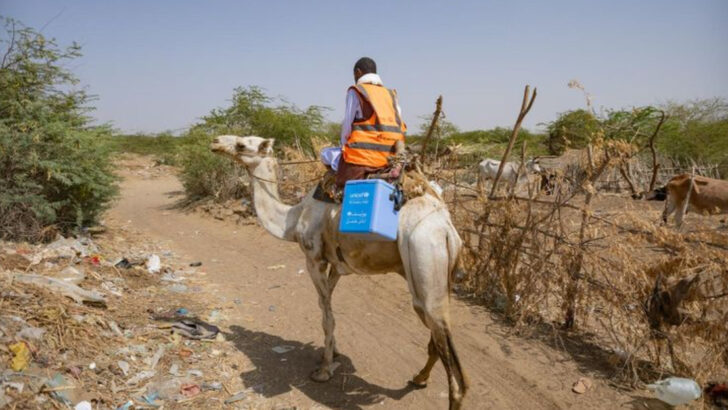In the heart of blistering deserts and vast stretches of nowhere, a quiet hero plods along—carrying hope on its back. Camels, nature’s toughest travelers, have become unexpected lifelines. Their mission? Delivering life-saving vaccines to children and families in places where no truck or drone can go. Through sandstorms, scorching sun, and miles of isolation, they keep walking. Strapped to their sides: solar-powered coolers packed with polio and measles vaccines. Their destination? Villages that may have never seen a doctor, where these precious doses mean the difference between life and death. They don’t gallop, and they don’t need to. These desert ships move steadily—bridging the world’s healthcare gaps one hoofstep at a time. Their journey is a story of grit, global teamwork, and an unwavering promise to reach everyone, everywhere.
Camel Caravans of Djibouti
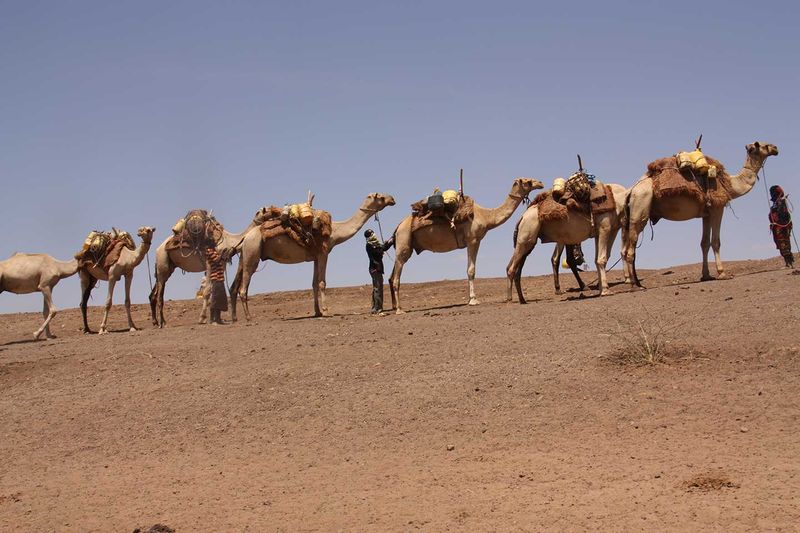
In the arid expanses of Djibouti, camel caravans are a lifeline. Since the 1950s, these resilient animals have traversed the harsh desert landscapes, delivering essential vaccines to nomadic tribes.
Their sturdy build and adaptability make them ideal for carrying temperature-sensitive vaccines, ensuring that children in remote areas receive polio immunizations. A camel’s journey through Djibouti is emblematic of bridging medical access gaps.
The sight of camels laden with vaccine coolers, trudging through the desert, is a testament to human ingenuity and the spirit of survival.
Sudan’s Mountainous Terrain
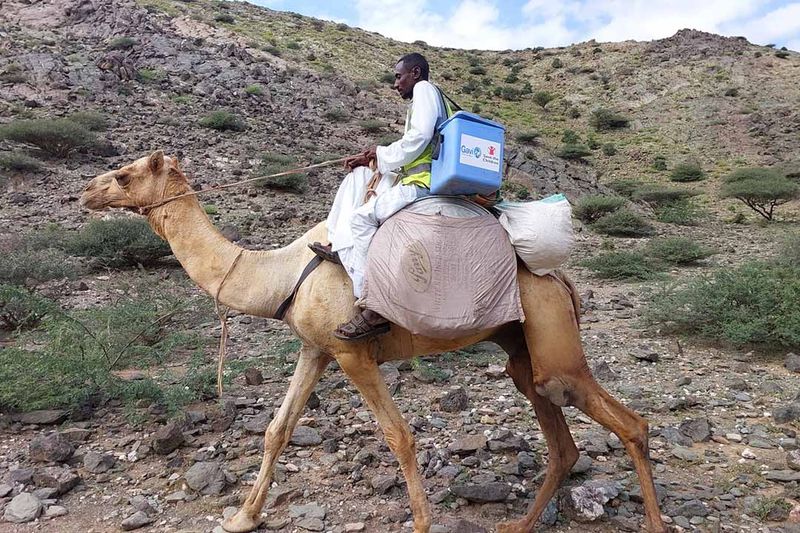
In Sudan’s mountainous regions, camels have become indispensable. Humanitarian groups like CARE and Gavi rely on these animals to carry vaccines to isolated communities.
Their ability to navigate rocky terrains makes them the perfect choice for this daunting task. With solar-powered refrigeration units strapped to their backs, camels ensure that vaccines remain viable.
This use of camels has been crucial in Sudan, where infrastructure challenges are significant. By overcoming physical barriers, they play a vital role in delivering healthcare solutions to those in need.
Temperature-Controlled Coolers
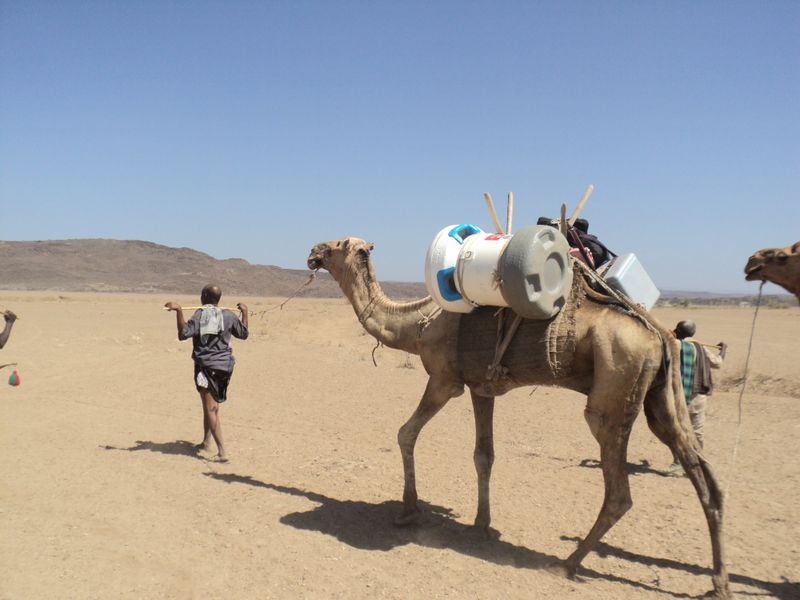
In the fight against diseases, temperature control is critical. Camels have been equipped with state-of-the-art coolers to maintain vaccine efficacy as they journey through remote regions.
These coolers are designed to withstand harsh conditions, ensuring that life-saving vaccines reach their destination in perfect condition.
In regions with extreme climates, this innovation is vital. Camels, paired with technology, represent a blend of tradition and modernity, highlighting a unique approach to public health challenges.
Solar-Powered Refrigeration
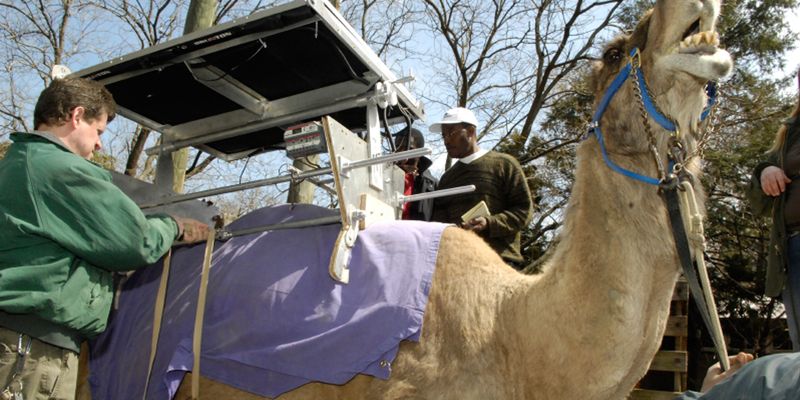
Harnessing the sun’s power, camels carry solar-powered refrigeration units, vital for maintaining the cold chain necessary for vaccine effectiveness.
This ingenious solution utilizes the abundant solar energy in desert regions, enabling continuous cooling during long treks. It’s a sustainable method that supports remote healthcare delivery.
The use of solar energy represents a commitment to environmental stewardship while ensuring the health of communities in secluded areas. Camels, thus, become carriers of both vaccines and innovation.
Bridging Healthcare Gaps
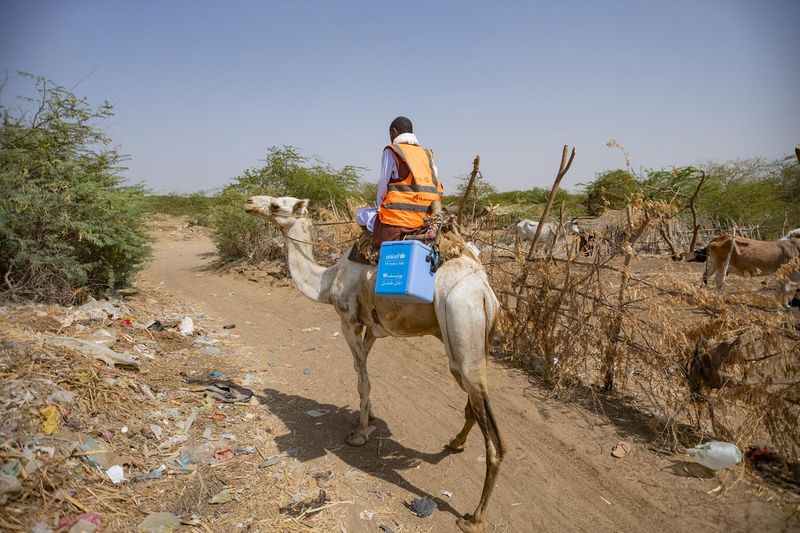
Camels have become symbols of healthcare access in isolated regions, where traditional vehicles can’t reach.
Their ability to carry heavy loads like medical supplies and vaccines bridges the gap between healthcare providers and underserved populations.
In many areas, these journeys are the only link to essential healthcare services. As camels trek across barren landscapes, they embody resilience, ensuring that no community is left without medical care.
Cultural Significance
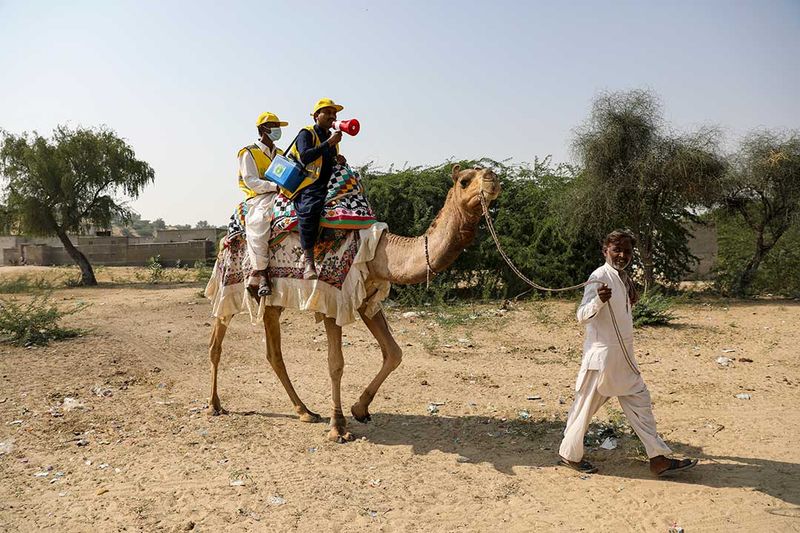
In many cultures, camels are more than just transport animals; they hold significant cultural value. This makes them ideal ambassadors for vaccine delivery initiatives in remote areas.
Their presence is often met with respect and acceptance, facilitating smoother delivery operations. Traditional decorations on camels can be seen as a bridge between modern healthcare solutions and cultural heritage.
Leveraging their cultural status enhances community engagement and trust, crucial for successful healthcare interventions in remote locations.
Modern-Day Camel Use

In today’s world, camels continue to serve as vital links in healthcare logistics. They are integral to outreach programs aiming to immunize children in remote villages.
The sight of camels being loaded with vaccine coolers by healthcare workers signifies a blending of ancient practices with modern-day health initiatives.
This enduring partnership ensures that life-saving vaccines reach those most in need, reaffirming camels’ role in the global health landscape. Their continued relevance showcases adaptability and the ongoing need for traditional methods in modern contexts.

